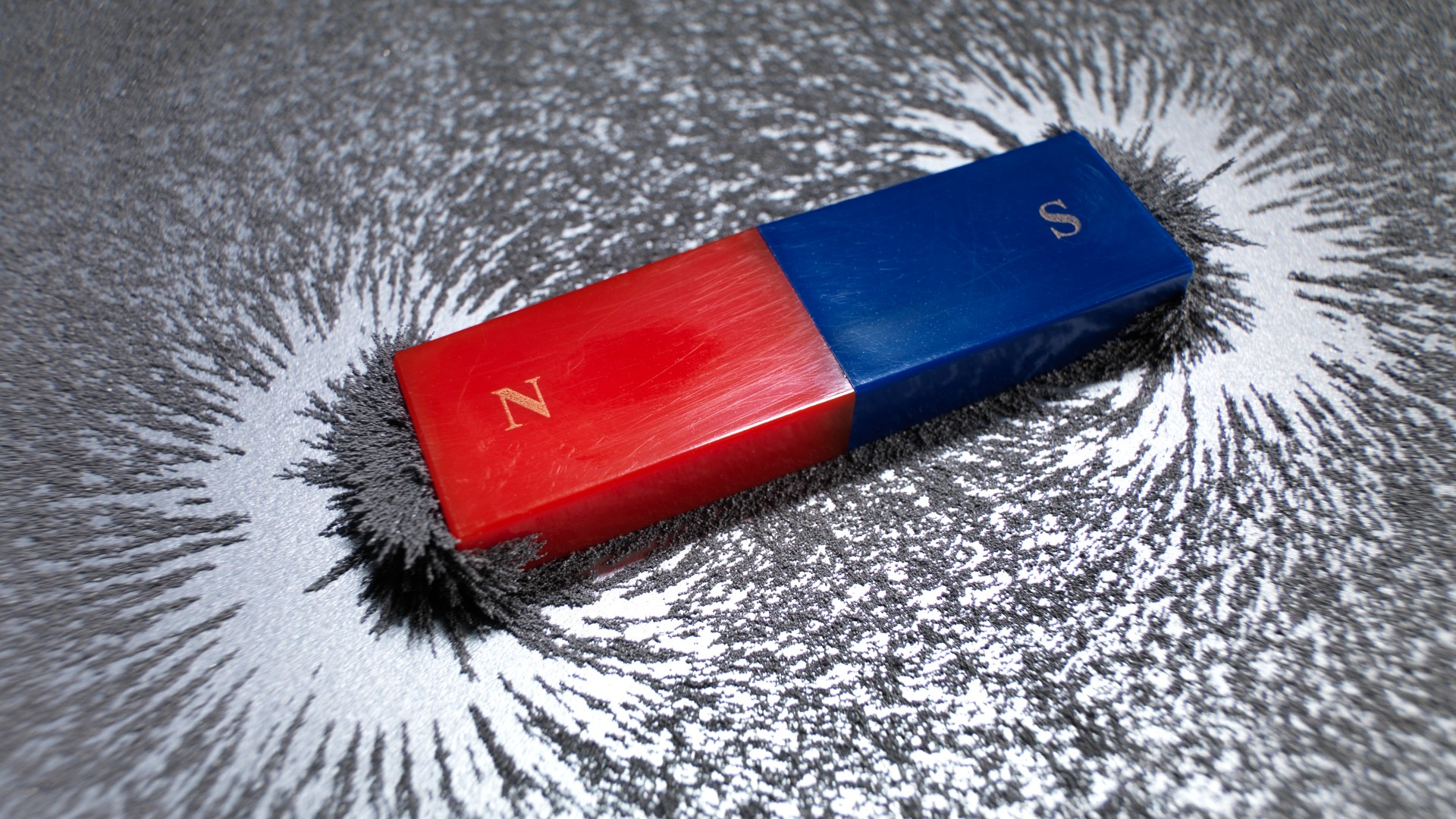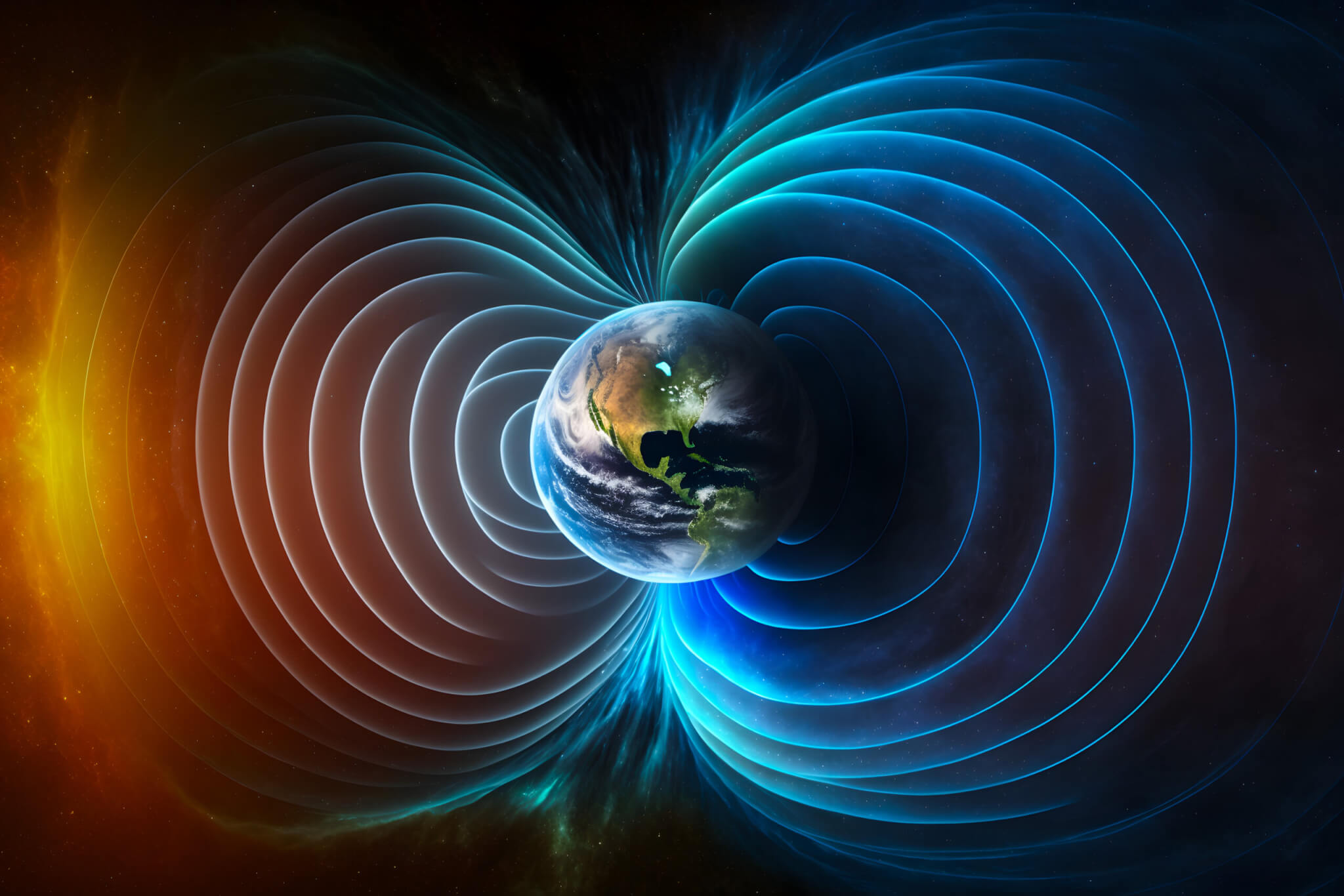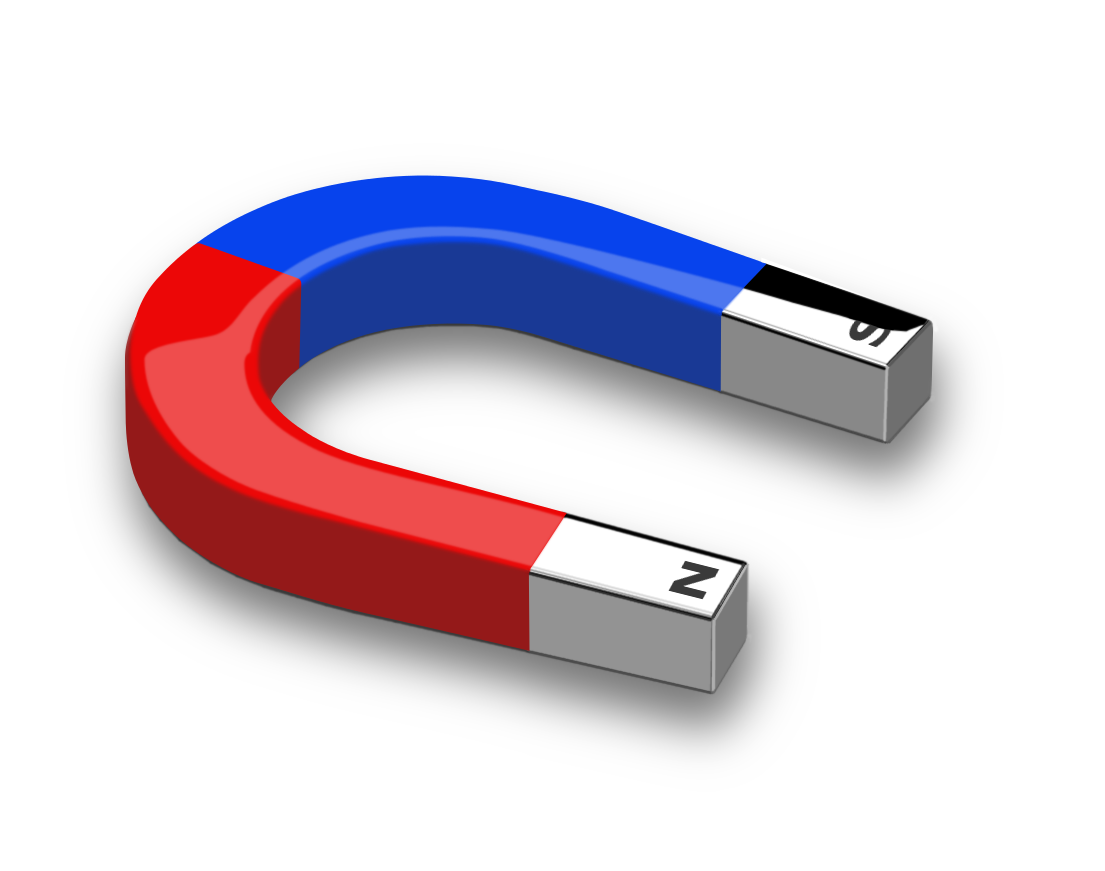Have you ever felt that invisible tug, that quiet force that makes certain things stick together, or sometimes, push apart? It's a rather common experience, isn't it, seeing a small magnet grab onto a metal surface, or two magnets playfully resist each other? This everyday magic, you know, is all about something called magnetism, a truly fascinating part of our physical world that works in ways we might not always think about.
This remarkable pull comes from something that's always there, yet we can't really see it directly. It’s like an unseen bubble around certain objects, basically, giving them a special kind of power. This power allows them to influence other things that have a particular makeup, drawing them in with a surprising strength. It's a fundamental aspect of how the universe operates, actually, showing up in places you might not expect.
From the simple fridge magnet holding up a note, to the way a compass points us north, this force is at play. It's a natural phenomenon that, in some respects, shapes so much of what we experience daily. And when we consider something like "magnetic zeros jade," we start to wonder how these general principles might apply to something so specific and, perhaps, unique, you know, making us think about the subtle ways this pull can show itself.
Table of Contents
- What Makes Things Stick?
- The Invisible Hand of Magnetic Zeros Jade
- How Does This Pull Actually Work?
- Exploring the Core of Magnetic Zeros Jade
- Can Everything Be Magnetic?
- Different Responses in Magnetic Zeros Jade
- Where Do We See Magnetism Around Us?
- Everyday Examples and Magnetic Zeros Jade
What Makes Things Stick?
So, when you hold a magnet, what exactly is happening? Well, a magnet is really just a piece of material, or an object, that creates its own special area of influence, a kind of unseen bubble, you know. This invisible bubble, this magnetic field, is what gives the magnet its most obvious quality: the ability to pull on other things. It's a bit like an invisible hand reaching out and grabbing something made of specific metals, basically. This pull is quite strong for certain materials, and it's something we often take for granted, but it's a very real force at play.
This remarkable power to attract, that's what we mean when we describe something as "magnetic." It means it has this truly special ability to draw things in. It’s not just a casual pull; it’s a distinct, almost extraordinary, kind of force. You might find yourself wondering, actually, how something so ordinary looking can have such a profound effect. It's a characteristic that makes these items stand out, truly, from other everyday objects we come across, in a way, because of this inherent ability to create that pull, or sometimes a push, on certain things around them.
Think about it: a small piece of metal, like a paperclip, suddenly jumps to a magnet. That quick, almost surprising movement, that's the magnetic force in action. It's an invisible connection, basically, but the results are very clear to see. This force is always there, even when we don't feel it, surrounding the magnet like a silent, powerful aura. It's this quiet presence that allows the magnet to do what it does, creating that unique interaction with other materials, you know, that makes it so useful in so many different situations, from holding notes to more complex uses.
- Dorothy Wang Engaged.https
- Emilia Clarke Husband.https
- Trey Yingst Parents Nationality.https
- Sabrina Banks Onlyfans.https
- Keanu Reeves Politics.https
The Invisible Hand of Magnetic Zeros Jade
Considering the general idea of how magnets work, we can think about how something like "magnetic zeros jade" might fit into this picture. If "magnetic zeros jade" were a material, it would, in some respects, likely have its own unique magnetic field, creating that invisible bubble of influence. This field would be responsible for any attractive or repulsive properties it possesses, just like any other magnetic item. It's interesting to consider how a specific material, such as "magnetic zeros jade," could exhibit these general magnetic characteristics, you know, potentially with its own particular strengths or behaviors that set it apart.
The very meaning of "magnetic" suggests a power to attract, a compelling quality. So, if "magnetic zeros jade" is described as magnetic, it implies it carries this special ability to draw things in, or perhaps to be drawn in itself. This quality, you see, would be its defining feature in the context of magnetism. It's not just about being pulled; it's about possessing that inherent power to influence. This is what makes any magnetic material, including something hypothetical like "magnetic zeros jade," so intriguing, basically, because it has this active role in creating a force that others can feel and respond to, in a way.
The invisible hand of magnetism, whether from a common bar magnet or something perhaps more specialized like "magnetic zeros jade," is always at work. It's a force that operates without us seeing it, yet its effects are undeniable. This unseen power is what allows magnetic items to interact with their surroundings, creating connections or separations. It's a subtle but constant presence, you know, shaping how different materials behave when they come into contact with a magnetic field. This quiet, persistent influence is what makes magnetism such a fundamental aspect of the physical world, and something that, arguably, holds a great deal of interest for those who study it, basically.
How Does This Pull Actually Work?
So, this whole idea of magnetism, this push and pull, it's really connected to something very small: the movement of tiny electric bits. These bits, you know, are always on the go, and when they move, they create what we call magnetic fields. It's like a ripple effect; the motion of these charges sets up the invisible bubble we talked about earlier. This motion isn't just one thing, either; it can take many forms, making magnetism a rather versatile force. Sometimes it's like electricity flowing in a wire, basically, or other times it's much smaller, happening inside the very stuff that makes up an object.
Magnetism is, at its core, a natural force that comes from these moving electric charges. You might think of it as a kind of energy in motion. Often, these movements are so incredibly tiny, happening right inside the materials we recognize as magnets. These microscopic motions are responsible for the magnetic properties of everyday things, like the little magnets on your refrigerator or the needle in a compass that always points north. It's pretty amazing, actually, that something so small can create such a noticeable effect, you know, influencing things on a much larger scale, which is what makes it so fascinating to consider.
Every single thing around us is made up of tiny, tiny pieces, and within these pieces, there are even smaller bits with electric charges. When these charges move, that's when magnetism happens. It could be a steady flow of electricity, like in a conductor, or just individual charged particles zipping around. This constant, almost unseen, activity is what generates the magnetic force we experience. It's a fundamental aspect of matter, basically, showing us how the very building blocks of the universe interact to create the forces we observe, in a way, making everything from the smallest atom to the largest planet subject to these unseen pulls and pushes.
Exploring the Core of Magnetic Zeros Jade
When we think about how "magnetic zeros jade" might behave, we consider these fundamental ideas about moving electric charges. If "magnetic zeros jade" shows magnetic properties, it means that, somehow, the tiny electric bits within its structure are moving in a way that creates a magnetic field. This could be due to the specific arrangement of its electrons, or perhaps some unique internal currents. It's interesting to speculate how the inner workings of "magnetic zeros jade" would contribute to its overall magnetic nature, you know, making it a subject of curiosity in the study of materials and their properties.
The way a material's electrons are organized plays a very, very big role in how it responds to or creates magnetism. Different substances show varying degrees of magnetism based on these tiny internal arrangements. So, for "magnetic zeros jade," its particular magnetic qualities would stem directly from how its own electrons are moving and interacting. This means that if "magnetic zeros jade" has a unique magnetic signature, it's likely because its internal structure is somewhat distinct, basically, from other materials we typically encounter. It's a deep connection between the very small and the observable world, in a way, showing how the atomic level influences the larger properties we can sense and measure.
Understanding the core of "magnetic zeros jade" in terms of magnetism would mean looking at these very, very small movements. Is it the way its atoms are aligned? Are there special pathways for electric currents within it? These are the kinds of questions that come up when we try to figure out why any material is magnetic. For "magnetic zeros jade," the answers would lie in its specific atomic and electronic makeup, basically. It's about how those fundamental pieces of matter come together to produce a force that can attract or repel, you know, giving it its magnetic character and making it a potentially fascinating subject for study, if it were a real material, of course.
Can Everything Be Magnetic?
Not everything can be magnetic in the same way, you know. While every substance is made up of tiny units that have electric charges, not all of them produce a noticeable magnetic field that we can easily detect. A material or object is considered "magnetic" if it can either be pulled by a magnet or if it can create its own magnetic field. This property is quite specific to certain materials. It's not a universal trait that every single thing possesses, basically, which is why some things stick to a fridge and others just fall off. It's a very particular kind of interaction, in some respects, that depends on the internal makeup of the material itself.
When we talk about something being able to attract objects containing iron or steel, that's a key characteristic of being magnetic. Things like iron, nickel, and cobalt are particularly good at this. These are the metals that magnets typically love to grab onto. So, if something is "magnetic," it means it has this capacity to interact strongly with these kinds of metals. It’s a very specific kind of relationship, basically, between the magnet and the material it's acting upon. It's not just any metal, you see, but those with certain properties that allow for this magnetic connection to form, in a way, making the interaction quite selective.
The ability to be magnetized, or to be attracted by a magnet, is also part of what it means to be magnetic. Some materials can actually become temporary magnets if they are exposed to a strong magnetic field. Others are simply drawn to magnets without becoming magnets themselves. This difference in behavior is due to the varying ways their internal structures respond to magnetic forces. It's a bit like how some things soak up water and others repel it, you know, just with magnetic energy instead of liquid. This variation is what makes the study of different materials and their magnetic responses so interesting, actually, showing the diversity in how the physical world works.
Different Responses in Magnetic Zeros Jade
Thinking about "magnetic zeros jade," we would consider how it responds to magnetic forces. Does it get pulled in strongly, like iron? Or does it perhaps show a weaker, more subtle response? The way "magnetic zeros jade" reacts to a magnetic field would tell us a lot about its internal composition and how its tiny parts are arranged. If it's truly magnetic, it means its atomic structure allows for those electric charges to move in a coordinated way, creating its own magnetic presence or being significantly affected by an external one, basically. This response would be a defining characteristic, you know, setting it apart from non-magnetic materials.
Different materials show magnetism based on the behavior of their electrons. Some materials, like those used in fridge magnets, are called ferromagnetic, meaning they have a very strong and lasting magnetic pull. Others might be diamagnetic, which means they are slightly repelled by magnets, or paramagnetic, which means they are slightly attracted. For "magnetic zeros jade," its specific type of magnetism would depend on how its electrons behave. It's like a spectrum of responses, basically, from strong attraction to slight repulsion, and "magnetic zeros jade" would fit somewhere along that line, in a way, depending on its inherent properties.
So, if "magnetic zeros jade" is indeed magnetic, its properties would likely align with one of these known types of magnetic behavior. It could be strongly attracted, or perhaps it has a more nuanced interaction with magnetic fields. The details of its magnetic response would reveal much about its underlying nature. It's this unique interaction with magnetic forces that makes any material interesting to study, and "magnetic zeros jade" would be no different, you know. Its specific magnetic characteristics would be a key part of its identity, telling us how it fits into the broader picture of magnetic materials, actually, and how it might be used or understood.
Where Do We See Magnetism Around Us?
Magnetism is all around us, often in very, very simple forms that we might not even notice. The most obvious examples are, of course, those magnets that hold pictures to your refrigerator door. These are objects that create their own magnetic fields and have that clear ability to attract metals like iron, nickel, and cobalt. But it's not just about household items. Think about how a compass works; it relies on the Earth's own massive magnetic field to point us in a specific direction. It's a constant, global presence, basically, guiding us without us even realizing it, you know, showing just how pervasive this force truly is in our daily lives.
The invisible lines of force that make up a magnetic field have a particular pattern. They typically come out of one end of a magnet, often called the north pole, and then curve around to enter the other end, the south pole. This continuous flow of magnetic energy is what creates the pull or push we feel. It's a very organized system, actually, even though we can't see it directly. This consistent behavior is what allows us to predict how magnets will interact with each other and with other materials, in a way, making magnetism a very reliable force that we can use for many different purposes, from simple toys to complex machines.
Beyond the everyday, magnetism plays a huge role in technology and nature. Electric currents, which are just moving electric charges, can create magnetic fields. This principle is used in everything from electric motors to generators. Our planet itself has a huge magnetic field, which protects us from harmful particles from space. It's a natural shield, basically, that's always there, working silently to keep us safe. So, whether it's a tiny toy or a planetary defense system, magnetism is a fundamental force at work, you know, shaping our world in countless visible and invisible ways, truly a remarkable aspect of the physical universe.
Everyday Examples and Magnetic Zeros Jade
Considering all these common instances of magnetism, we can reflect on how "magnetic zeros jade" might fit into the picture of everyday magnetic phenomena. If "magnetic zeros jade" were, say, a material used in jewelry, its magnetic properties could mean it subtly interacts with other metallic items, perhaps even with the Earth's own magnetic field. It's interesting to think about how something like "magnetic zeros jade" might be experienced in a practical sense, whether it's in a functional way or simply as a curious property, basically, that adds to its unique character, you know, making it more than just a simple stone or object.
The force that magnets put on each other, whether they attract or repel, is a clear demonstration of magnetism. This same principle would apply to "magnetic zeros jade" if it possesses magnetic qualities. If you brought two pieces of "magnetic zeros jade" together, they might stick, or they might push away, depending on their orientation and inherent magnetic nature. This interaction, you see, would be a direct consequence of the moving electric charges within them, just like any other magnetic material. It's a very straightforward application of the principles we've discussed, actually, showing how even a unique material would still follow the fundamental rules of magnetism.
We use the word "magnetic" to describe anything that is caused by, or relates to, this force of magnetism. So, if "magnetic zeros jade" has any connection to magnetism, it means it's either producing a magnetic field, or it's being affected by one. Perhaps it's a material that can be easily magnetized, or maybe it has a natural, subtle magnetic presence. The specific way "magnetic zeros jade" interacts with magnetic forces would define its place among the vast array of magnetic materials we know, basically, adding another intriguing example to the study of this powerful, unseen force, in a way, and how it manifests in different forms.
- Jasmine Crockett Husband.https
- Wolfgang Van Halen Weight Loss.https
- Wentworth Miller Partner.https
- Is Aishah Hasnie Married.https
- Natasia Demetriou Husband.https


